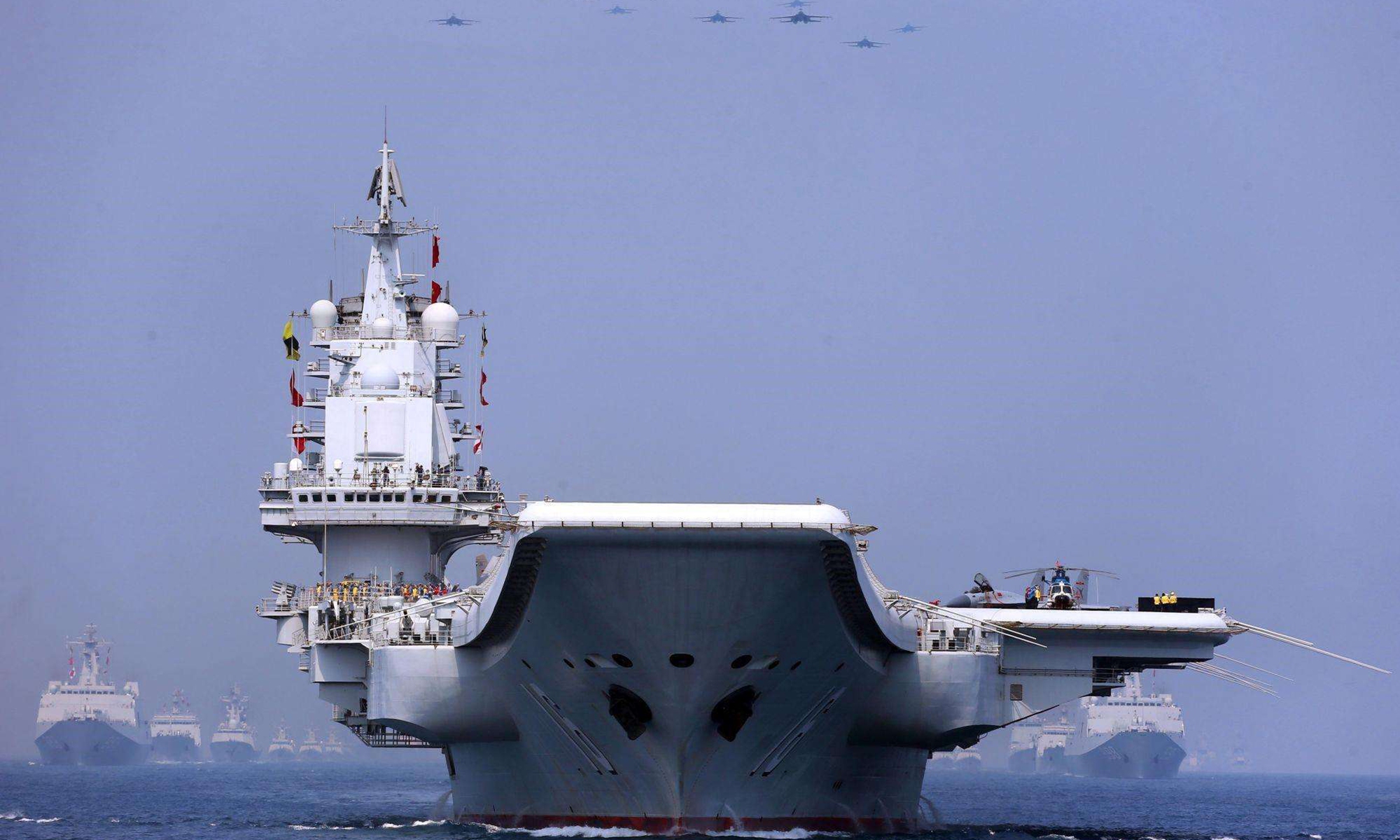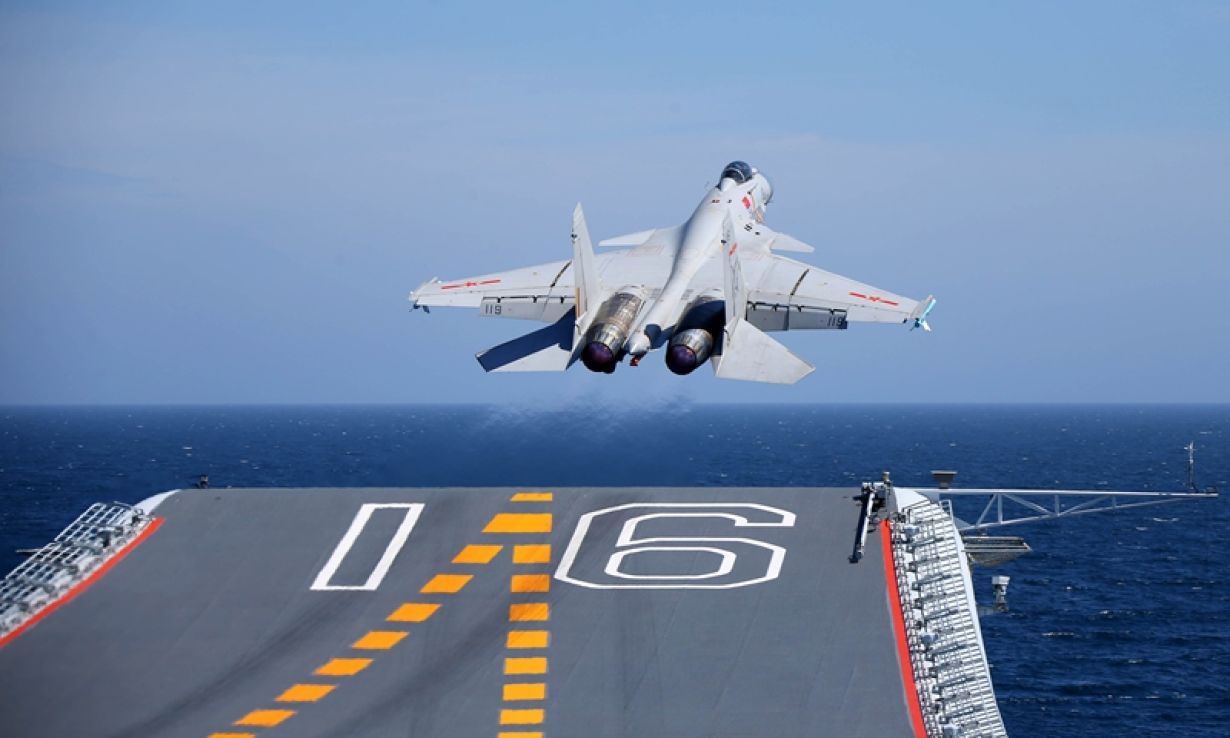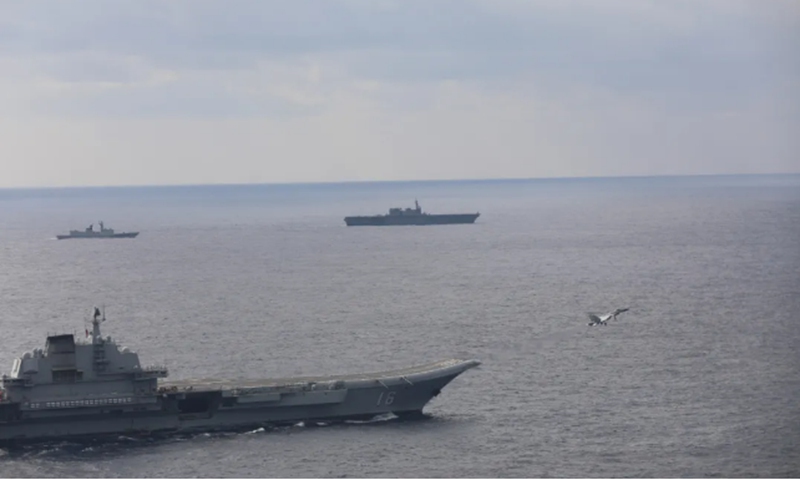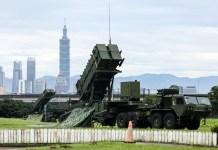A Chinese carrier strike group led by the aircraft carrier Liaoning has been carrying out military drills in the western Pacific, simulating attacks on Japan’s Nansei Islands since December 16, reported The Yomiuri Shimbun, citing Chinese sources.
Chinese President Xi Jinping reportedly ordered the drills the same day the Japanese government revealed three significant defense-related documents.
The drills, set to end on December 26, are reportedly being conducted by a PLA Navy flotilla operating in the western Pacific south of Okinawa Prefecture under the command of the Chinese Navy’s aircraft carrier Liaoning.
The report said that the drills also involve type 055 missile destroyers, cutting-edge warships equipped with the latest weapons to enemy defenses. The report added that China would simulate missile launches against the Nansei chain of islands in long-range strike drills from the western Pacific.
Normally, the carrier strike group conducts its yearly winter drills in December, but Xi set a start date to undermine Japan’s security posture toward China this year.
The National Security Strategy was one of three documents adopted by the Japanese government on December 16. In response, the Chinese military was instructed by President Xi to conduct the drills on the same day.

During the exercises, strategic bombers would also mimic a pincer attack on Taiwan from the east and west, the report noted.
The Liaoning and other ships in the carrier strike group entered the Pacific Ocean on December 16 after transiting between the Okinawa and Miyako islands, as previously reported by the EurAsian Times.
On December 17, the Chinese Navy ships sailed 260 km west-southwest of Okidaito Island, and on December 20, the vessels were spotted 450 km east-northeast of Kitadaito Island.
From that point, Ship-borne aircraft may reach the Nansei chain in 5 to 10 minutes, posing a major threat to Japan. The Chinese Navy’s aircraft carrier Liaoning was reported to have made 130 takeoffs and landings, including about 60 by fighter aircraft and 70 by helicopters.
In May 2022, the Liaoning hosted more than 300 fighter aircraft and helicopter sorties over 20 days during the West Pacific far sea drills, raising the alertness of the Japanese defense forces.
“We will conduct surveillance activities with a strong sense of tension,” then-Defense Minister Nobuo Kishi said. The Chinese carrier’s exercise location is adjacent to the southwest Nansei islands, which are situated between Japan and Taiwan.

Dispute Over Senkaku Islands
The Japanese-administered Senkaku Islands, also known as the Diaoyu Islands in China, have turned into a key flashpoint between the two nations. The Nansei (Ryukyu) islands are a series of islands that extends southwest from the Japanese prefectures of Kagoshima and Okinawa toward Taiwan.
The westernmost tip is only 110 kilometers (68 miles) from the self-ruled island of Taiwan, which Beijing regards as a breakaway Chinese province and wants to reunite with the mainland.
On WeChat, the Chinese Coast Guard reported that its ships had patrolled “in the Chinese territorial waters surrounding the Diaoyu islands on Wednesday.” Although Tokyo has not yet responded, it has regularly charged Beijing with infringing its sovereignty over the Senkaku islands.
According to the US Defense Department, the Chinese military has embraced an active defense doctrine that might result in a preemptive strike on an enemy if Beijing suspects it is about to be assaulted.

The information on counterattack capabilities is mentioned in Japan’s security materials, while the Xi administration is concerned about a massive Japanese missile installation on the Nansei Islands.
The exercises are intended to weaken Japan’s security strategy against China. The Chinese Defense Ministry stated that on December 21, joint training operations between the Chinese and Russian navies commenced off Zhoushan, Zhejiang Province. The ministry announced that anti-submarine warfare and maritime blockade drills would be part of the exercises.
In anticipation of a Taiwan Strait crisis, Tokyo has already stationed a significant number of weapons on the Nansei islands and wants to bolster its defenses even more.
According to Japan’s 2022 defense white paper, the Japanese defense ministry intends to build more fuel and ammunition storage facilities and increase missile and electronic warfare capability on the Nansei Islands.
The US Army and Japan’s Self-Defense Forces reportedly created a joint operation plan in December 2021 that would allow an unspecified number of “attack bases” to be constructed in the Nansei island chain.
- Contact the author at ashishmichel(at)gmail.com
- Follow EurAsian Times on Google News




